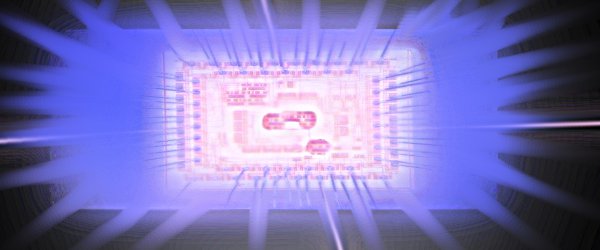BY LETTER
Plasma Processor
Technology > Application > Computronics
Science > Physics > Information Physics
Technology > Technology Levels > Transapientech / Godtech / Clarketech
Science > Physics > Information Physics
Technology > Technology Levels > Transapientech / Godtech / Clarketech
Godtech level computronium node that uses high energy plasma and magmatter to perform computations and store data. |
 Image from Steve Bowers |
The original concept of the plasma processor dates all the way back to the Information Age, when various researchers theorized about the ultimate possible limits of computation using conventional matter. These theorists quickly determined that the ultimate speed of a computer was dictated by quantum theory and Relativity, which stated that the minimum possible time it could take for something to change from one quantum state to another was limited by the amount of energy available to it. Assuming that the maximum amount of energy available could be had by converting the entire mass to energy led to the result that the so-called 'ultimate computer' would consist of a ball of plasma operating at nuclear temperatures for a tiny fraction of a second before radiating energy blew it apart. This was generally presumed to mean that no actual computer could ever operate at the ultimate theoretical limits of computation and for millennia this was the case, until the first S4 minds appeared.
First developed at the 4th Singularity level, a plasma processor consists of a complex three-dimensional magmatter mesh constraining high energy plasma via the intense magnetic fields associated with the material. Computations are performed as the plasma changes state an enormous number of times per second, with data being stored in the quantum states of the magelecton clouds associated with the magmatter mesh. Input/output and internal system communications are via gamma ray lasers and/or modulation of the associated magnetic fields. In the most advanced designs, comm-gauge wormholes also play a role, being magnetically contained and used to route communications to external systems (sometimes light-years away) or across the largest internal distances of the processor.
A standard S4 plasma-based computronium node is able to process some 2.98e38 bits per second, per kilogram of computronium. This makes a single kilogram of plasma processor as capable as an entire S3 moon-brain. In practice most plasma processing nodes are much larger, being used in Jupiter-brains, god-stars, and other deity-class processing nodes. At higher S-levels, plasma processor capabilities seem to increase greatly, both in terms of raw computational horsepower (it is believed that high energy S5 and S6 plasma processors are respectively some three and seven orders of magnitude more capable than the S4 versions, possibly taking advantage of space-time alterations generated as a side-effect of the energies involved) and the ability to decrease both the size and energies required to produce plasma based computation. Such 'cold plasma' based units are far less capable in terms of raw power but require far less support infrastructure and may be employed in applications such as experimental deep-space lifeforms or god-tech based angelnets employing restructured planetary magnetic fields as part of their processing architecture.
The greatest limitation on most plasma processors is often waste heat. The intense energies associated with the devices limits their ability to operate in close proximity to other, less durable devices generally including nearly any object made from conventional matter. This is a common issue with magmatter and other more advanced technologies however, and the design principles and best practices of working with such devices are thousands of years old.
Related Articles
- Angel Plasma
- Computer
- Computronium
- Magmatter
- Plasma - Text by M. Alan Kazlev
A usually high-temperature gas consisting entirely of ions, instead of neutral atoms or molecules. Because of the high temperature, the atoms strike each other hard enough to keep at least the outer electrons knocked off. At very high temperatures - e.g. the cores of stars and in fusion reactors - self-perpetuating nuclear fusion occurs. - Ultimate Chip
Appears in Topics
Development Notes
Text by Todd Drashner
Initially published on 26 September 2012.
Initially published on 26 September 2012.






